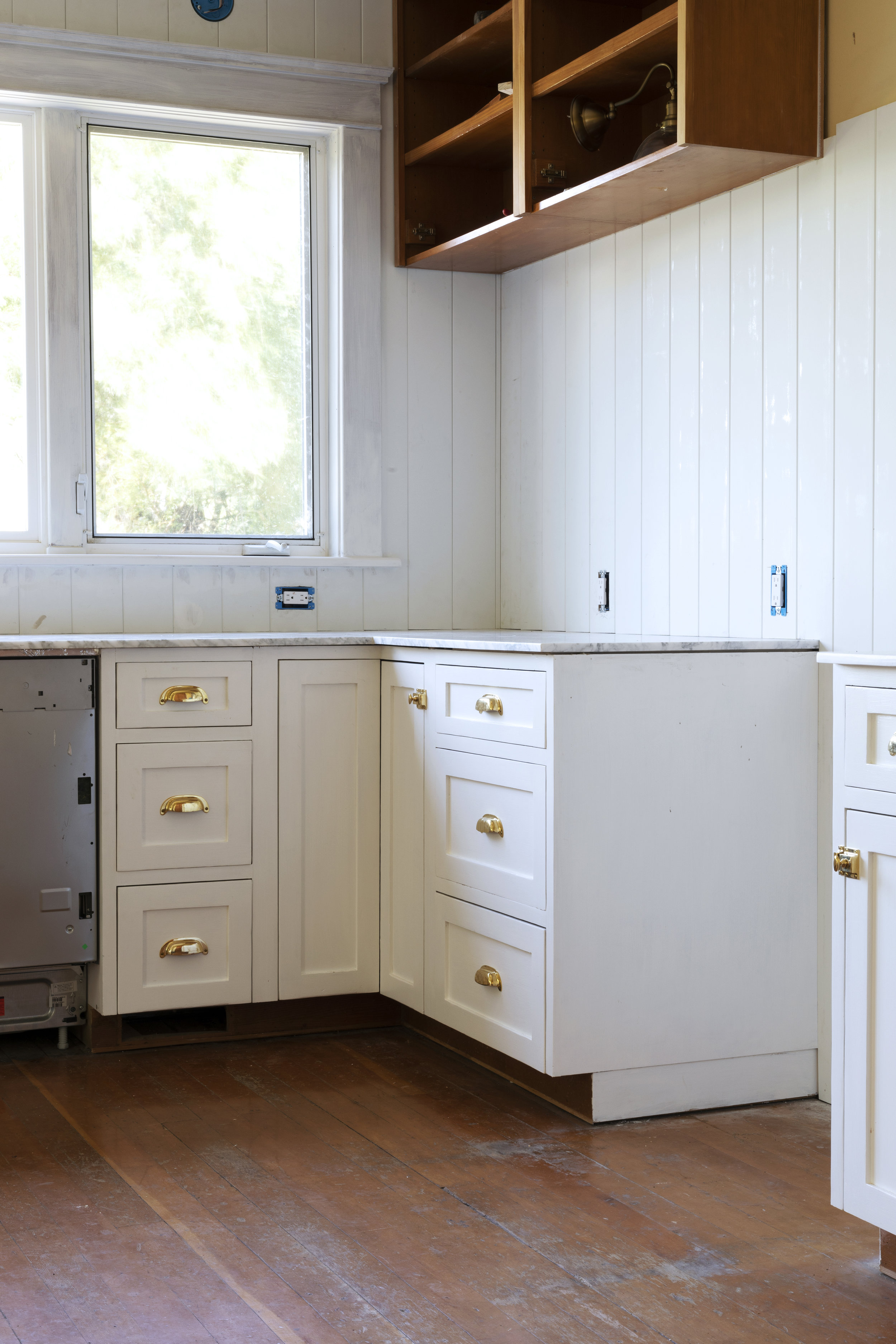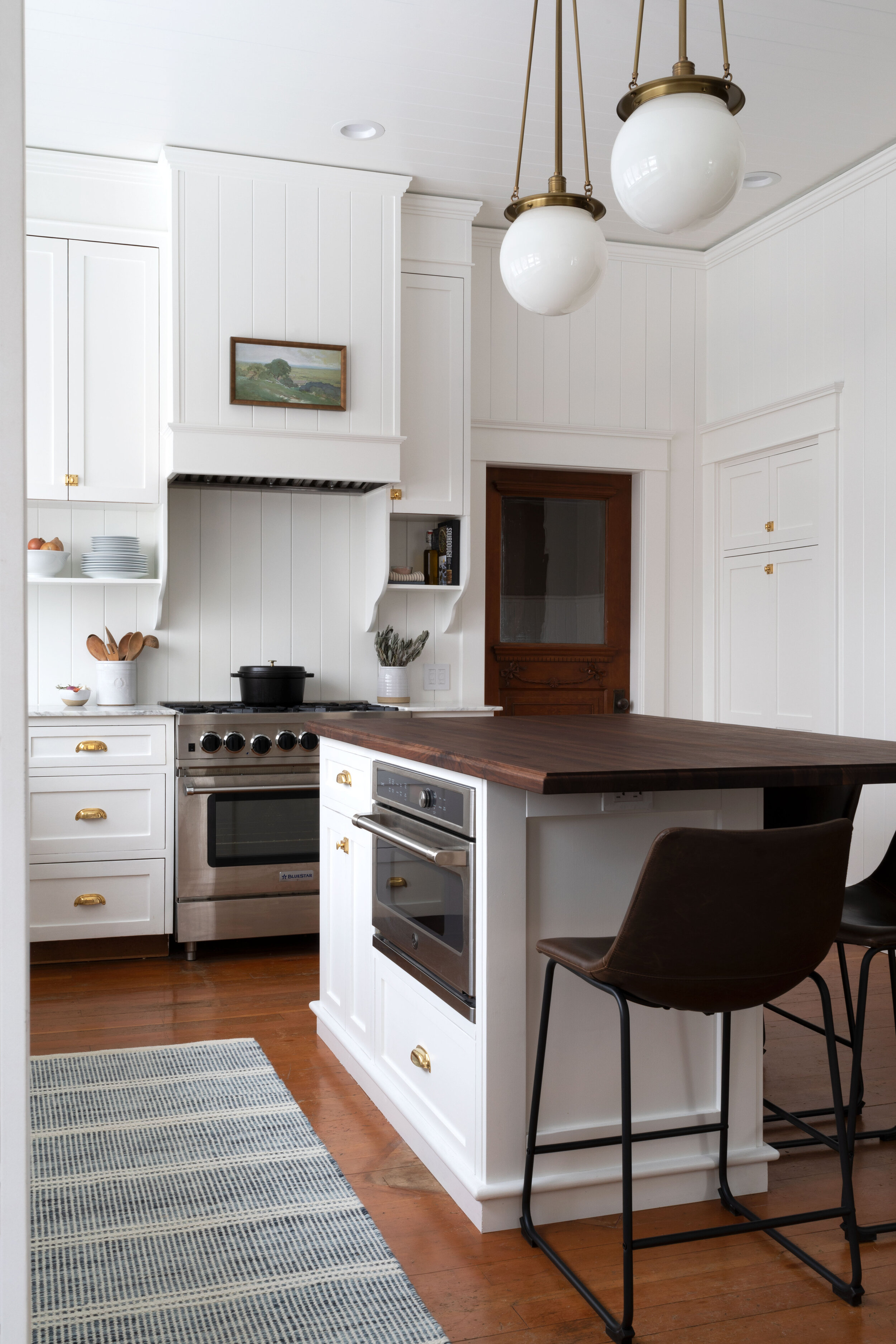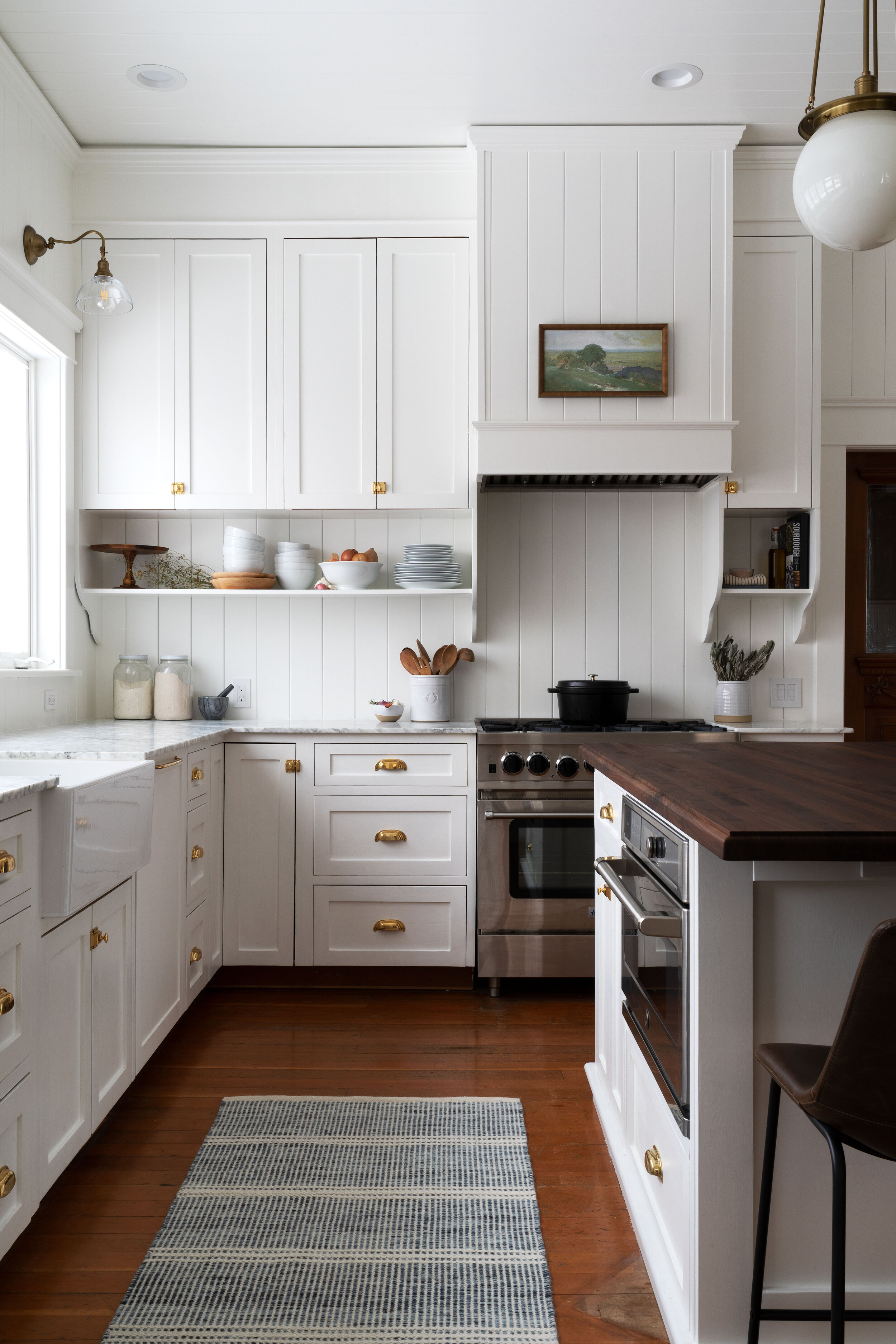Farmhouse Kitchen // 4 Flooring Options We Considered for our Remodel (and what we chose!)
THE FARMHOUSE
Probably the biggest point of debate in our kitchen remodel (to date, at least) has been the flooring. We’ve gone round and round with the decision. One week it’s “rip up the floors up and lay down white oak”. The next it’s “let’s do stone!”. But I think we’ve finally made a decision. And today, I thought it would be useful to walk through the process we took to narrow down our flooring options and share how we finally picked ‘the one’.
The existing floors in our kitchen are fir, like the rest of our 1912 Farmhouse. They’re in okay shape considering their age (despite being dirty in these pics 🙃), but they are full of dings and dents and showing quite a bit of ware. They routinely give our kids slivers…ouch!
Since deciding to remodel the kitchen, we’ve considered a few factors when it comes to the floors:
staying true to the age and style of the house
using a natural material
price
how much work the floors will be to install
longevity and durability
minimizing the number of flooring types in the house (ideally just 2 or 3 to keep the house cohesive and feeling old)
transition point (where we’ll switch flooring types)
With those things in mind, we narrowed down our search to four options: refinishing the existing fir floors, swapping them for stone, replacing them with white oak, or painting the existing floors. Let’s run through the pro’s and con’s of each.
Option 1 // refinish the existing fir floors
We imagine the refinished floors will look something like this (they’ll darken with age):
source: Yellow Brick Home
Pros: the wood is free and already installed! These floors have a lot of history with this house and they’re what the builders intended in 1912. Wood floors will lend warmth to our white kitchen.
Cons: We’ll have to do some patching and possibly replace the pantry floors (we’re still not sure of the condition of the wood floors under the tile). Fir is a softer wood that dents easily. The orange tone of fir is definitely not ‘on trend’ (but who cares about trends when we’re talking original wood floors, right?!). These floors have already had a long life, and we don’t know how much longer they’ll last. Refinishing hardwoods floors is a not a job we enjoy.
Option 2 // Stone
We imagined installing a stone floor similar to this:
source: Devol Kitchens
Pros: Stone is durable and long-lasting. Doesn’t require refinishing (phew!). Garrett’s favorite option.
Cons: They’d require a fair bit of demo and labor to install. More expensive than reusing the existing floors. Stone is uncomfortable to stand on all day. Lots of readers mentioned that dropped glasses and plates tend to shatter when dropped on stone floors.
Option 3 // White Oak
We used (and loved) white oak floors at the Porch House. We imagine white oak would look something like this:
Source: Remodelista (design by Katie Hackworth, owned by Aran Goyoaga)
Pros: White oak is hard and durable. We’ve used white oak before and loved it. The grey-tones in white oak are more ‘on trend’ and we like it better than fir. New wood flooring should last 50+ years.
Cons: Laying and refinishing floors is labor intensive. New white oak floors would be expensive, especially since we’d want to lay them throughout the entire main floor (~1600sf). Refinishing wood floors is not a job we like to do.
4 Paint the existing floors
Painting hardwood floors is a really great way to extend their life. I love the idea of a checkered floor like this one.
Source: via @bradytolbert photo: @dana_gallagher
Pros: the material is already installed. Paint is cheap and a relatively easy job. Paint can be durable with the right top coat. Extend the life of the floor for modest expense and effort.
Cons: It looses the warmth of wood in our white kitchen. Where do we end the paint?
What we chose
In the end, we decided to keep and refinish the existing fir floors! It came down to the fact that they’re here and original and we just couldn’t justify replacing them. We opted against painting because I really want the warmth of wood in this space. It took me awhile to appreciate the orangey-ness of fir, but it’s grown on me. The warm-tones of fir really are beautiful, even if they’re not ‘on trend’, and I appreciate the richness they’ll lend this kitchen.
So eventually (probably not this year, and maybe not for a couple years), we’ll refinish all the wood floors on the main floor of our Farmhouse. That will require we essentially ‘moving out’ of the house - placing all rugs, furniture, curtains, etc outside - so we’re not exactly looking forward to it. But it’s going to be worth it!






















